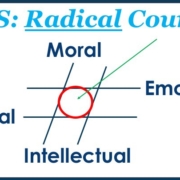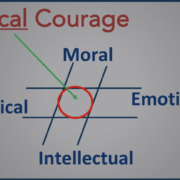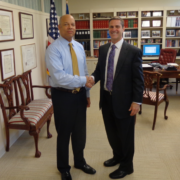What Baltimore’s Key Bridge Tragedy tells us about Risk Management
My heart goes out to the families of the six killed and all people harmed by this terrible tragedy. The Singaporean-flagged ship, Dali, lost power on its way out of Baltimore’s harbor, crashing into a Key Bridge pylon and destroying the majestic bridge.
Similar to the 9/11 hijackings, the risk of this particular catastrophe is more evident in hindsight. As a leader, you don’t live history backward, though, and your livelihood depends on a lot of factors outside of your control, so you have to manage risk well.
Read on if you want a simple risk management process.
As author Alan Weiss suggests, risk is a function of probability and seriousness. Probability is the likelihood of a particular risk materializing, while seriousness is the extent of harm it causes.
Two variables make for a good risk management double-axis chart.

When a risk has a high probability but low seriousness, you should move forward while monitoring and aiming to lower the likelihood. Minor equipment failures and small-scale supply delays are common examples. You can reduce the seriousness by making routine repairs and keeping appropriate stockage levels. Preventing these risks altogether can create massive opportunity costs. Swapping out major equipment each month might reduce the risk of failure, but the cost of such action would be prohibitive.
Low probability, low seriousness risks are not worth stewing over. You should drive on and adjust as necessary. There’s a low probability, for example, that someone will object to this article and unsubscribe. It’s a free newsletter, so the seriousness is low, too.
The Key Bridge disaster was a low-probability, high-seriousness risk. Your best choice here is to have contingencies, like insurance. There’s a tendency after such tragedies to try to lower the probability even further, but trying to prevent freak accidents is fraught.
Innovation is another contingency you can consider. To Sears, the probability of Amazon coming along was low even as the seriousness of such a competitor would be high. As digital technology permeated the workplace, Sears got complacent, and Amazon put them out of business. What’s your innovation plan for AI?
High-probability, high-seriousness scenarios require you to avoid them altogether or take action to mitigate one or both problems. Do ships like the Dali have chronic power problems? If so, another crash will be more likely. You can reduce the probability by having inspections in port, using tugs, and requiring redundant power systems.
Take fifteen minutes to identify your business risks in each quadrant and identify mitigation measures. Even better, involve your team members. They’ll understand the mitigation measures you’ll want to put in place, and will be more likely to identify and report problems quickly because they’ve thought about the consequences.
How’s this process working for you? Email me to let me know.
P.S.
This tool and other visuals give you a conscious process you can teach, assess, and improve.
Most leaders use unconscious processes that work to varying degrees. You cannot teach, evaluate, or improve an unconscious process, so people get frustrated and leave.
What would be the impact if you had more tools like this one? The best places to find them are in my trademarked programs Becoming a WHY Leader® and Building an Inspiring Culture®.
Becoming a WHY Leader® is a video-based program that moves you from being a “Hands-On” to an “Eyes-on, Hands-Off” leader, which is necessary if you want to lead multi-unit organizations and inspire people to contribute their best to your team’s success.
Do you want to create a culture where people voluntarily meet your standards and expectations? Building an Inspiring Culture® is a video-based program that outlines the process for doing so.
You can engage in these self-directed programs at your own pace and order. Do you want to improve your self-awareness or strengthen buy-in? Go directly to the module you want, watch a short video, and apply the process visual to get results immediately.
Each program retails for $997 or $1450 for both.
For the rest of April 2024, I am offering lifetime access to you for $297 each or $397 for both.
You can enroll in one or both of them using these links:
Becoming a WHY Leader®: https://sla.circle.so/checkout/becoming-a-why-leader
Building an Inspiring Culture®: https://sla.circle.so/checkout/building-an-inspiring-culture
Bundle It! Get both programs for just $397: https://sla.circle.so/checkout/why-leader-and-inspiring-culture
Do you want to license these programs for your organization? Email me, and we’ll set up a time to discuss.










